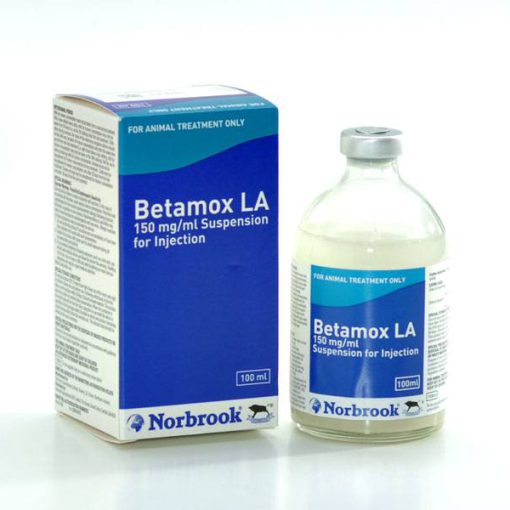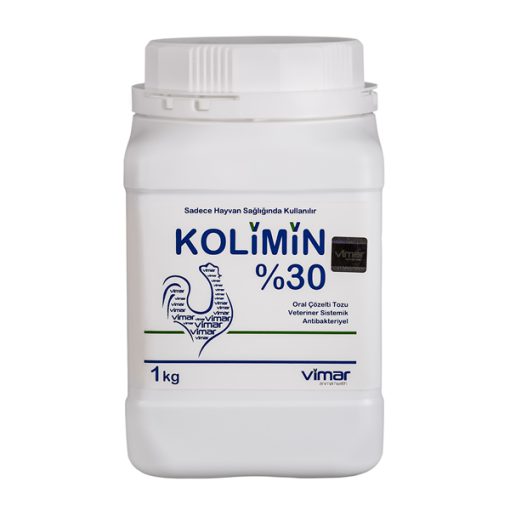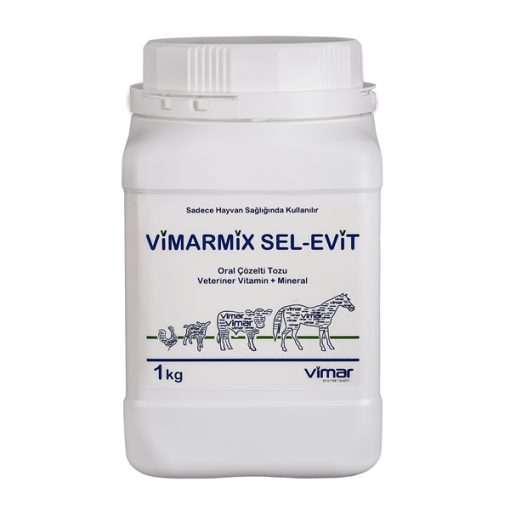For Animal Use Only
SULFACEL
Solution for Injection
Veterinary Systemic Antibacterial
COMPOSITION
Sulfacel Solution for Injection is a clear, light yellow-yellow sterile solution containing 215.8 mg of Sulfadimidine sodium and 40 mg of trimethoprim, equivalent to 200 mg of Sulfadimidine base, per ml.
PHARMACOLOGICAL PROPERTIES
Sulfacel Solution for Injection is prepared on the basis of the combination of sulfadimidine sodium, a sulfonamide derivative, and trimethoprim. Thanks to the active ingredients of sulfadimidine sodium and trimethoprim it contains, it inhibits the activity of two consecutive enzymes in the folic acid synthesis chain of susceptible bacteria. With the combination of two active substances with synergistic effect, a stronger effect occurs than the antibacterial effect of each active substance at lower doses, and the risk of developing resistance of bacteria is reduced. Sulfacel Solution for Injection is effective in vitro against the following gram-positive and gram-negative bacteria:
Gram-positive aerobes: Staph. aureus, Streptococcus sp., Actinomyces sp., Corynebacterium sp., Listeria monocytogenes, Erysipelothrix rhusiopathie.
Gram-negative aerobes: Actinobacillus sp., Bordetella sp., Enterobacteriaceae (E. Coli, Klebsiella sp., Proteus sp., Salmonella sp., Yersinia sp.) Haemophilus sp., Pasteurella sp.
Anaerobes: Actinomyces sp., Bacteroides sp., Fusobacterium sp., some Clostridium sp., Chlamydia sp.
Some Mycobacterium sp., and some Nocardia sp. are moderately susceptible.
Rickettsia sp. Leptospira sp., Pseudomonas aeroginosa, Mycoplasma sp. are considered resistant.
Sulfadimidine sodium is rapidly and well absorbed after parenteral administration and does not pose a risk of crystallization in the kidney tubules, due to its slow excretion from the body and its metabolites being well soluble in water. After parenteral administration of sulfadimidine sodium and trimethoprim, peak plasma concentration is reached in approximately 4 hours. After intravenous administration of sulfadimidine sodium, it reaches a plasma concentration of 5 mg/100 ml for 24 hours. Sulfadimidine sodium and trimethoprim are bound to plasma proteins. Excretion from the body is mostly in the urine.
AREA OF USE/INDICATIONS
Sulfacel Solution for Injection is used in the treatment of digestive, respiratory, and urogenital system infections and local infections of cattle, horses, calves, foals, calves, sheep, goats, cats and dogs. In this context, it is used in enzootic pneumonia due to Pasteurella spp., upper and lower respiratory tract infections alone or with viral infections, gastroenteritis, and septicemia due to E. coli and Salmonella, calf diphtheria, and soft tissue infections.
USAGE AND DOSAGE
It is administered intramuscularly or slowly intravenously unless recommended otherwise by the veterinarian.
Pharmacological dose: 16 mg/kg body weight/day for target species.
Practical dose: 1 ml/15 kg body weight/day.
| Animal Type | Body Weight (kg) | Dose (ml) | Method of Administration |
| Horse | 450 – 600 kg | 30 – 40 ml | Intravenously (i.v.) |
| Foal | 50 – 150 kg | 4 – 10 ml | Intravenously (i.v.) |
| Cattle | 450 – 600 kg | 30 – 40 ml | Intramuscular (i.m.), Intravenously (i.v.) |
| Calf | 50 – 150 kg | 4- 10 ml | Intramuscular (i.m.), Intravenously (i.v.) |
| Calf | 30 – 45 kg | 2 – 3 ml | Intramuscular (i.m.) |
| Sheep – Goat | 45 – 60 kg | 3 – 4 ml | Intramuscular (i.m.) |
| Lamb – Kid | 7.5 – 15 kg | 0.5 – 1 ml | Intramuscular (i.m.) |
| Dog | 5 – 30 kg | 0.3 – 2 ml | Intramuscular (i.m.) |
| Cat | 1.5 – 7.5 kg | 0.1 – 0.5 ml | Intramuscular (i.m.) |
It is administered intramuscularly and intravenously in cattle, and intravenously in horses, preferably slowly and at close to body temperature. A single dose is usually sufficient for treatment. If necessary, it can be continued once a day for a maximum of 3 days. In severe infections, 1 ml of Sulfacel Injectable Solution can be applied per 10 kg body weight. During intravenous administration, care should be taken to ensure that the temperature of the product is close to body temperature. Attention should be paid to the conditions of asepsis in the application. The syringe and needle must be sterile.
SPECIAL CLINICAL INFORMATION AND SPECIAL WARNINGS FOR TARGET SPECIES
Considering that sulfonamides can cause nephrotoxic effects (crystalluria, tubular obturation, hematuria, etc.) in dehydration and acidic urine environment, care should be taken not to dehydrate the animals during the treatment.
UNDESIRED EFFECTS
In case of folic acid deficiency in patients, the safety of the treatment is narrowed. In this case, a decrease in the number of platelets and red blood cells and an increase in the number of megablasts are observed. Long-term use in dogs can lead to keratoconjunctivitis sicca. They can cause idiosyncratic poisoning characterized by deterioration in the blood picture, nonseptic polyarthritis and skin rashes in all dogs, especially in Doberman-Pinscher dogs. In addition, it has undesirable effects such as exile, vomiting, Steven Johnson Syndrome, jaundice, anemia, coagulation disorder, decrease in granulocyte count, and sulfhemoglobinemia. In rare cases, horses may experience respiratory and cardiac shock following intravenous administration. For this reason, the product should be at body temperature and should be done as slowly as possible. It has toxic effects on the hematopoietic system and kidneys. It should be used with caution in newborn animals.
Long-term use can lead to hepatotoxicity and hypothyroidism.
They can cause crystal formation in the urinary system in all species. Therefore, this should be taken into account when using it in severely dehydrated animals. In order to alleviate the effects on the kidneys, the patient’s hydration should be healthy, and the urine should be alkalized when necessary.
DRUG INTERACTIONS
Incompatible with para aminobenzoic acid or its esters (procaine, tetracaine) and methenamine if given at the same time. In horses, it causes fatal dysrhythmias when given at the same time as detomidine. Dosage needs to be adjusted when using warfarin (Coumadin), phenytoin (Dilantin), or cyclosporine (Sandimmune). Phenylbutazone, thiazide diuretics, aspirin and methotrexate antacids reduce the absorption of sulfonamides. It should not be used with Cyclosporine. If used together, it reduces the benefit of cyclosporines and increases their toxicity. May increase the effects of anticoagulants (blood thinners), methotrexate, phenylbutazone, thiazide diuretics, salicylates, probenicid and phenytoin. When given together, cyclosporines can cause kidney damage. It should not be used together with anticoccidial drugs containing ionophores, as it will cause toxic effects. Auxiliary enzymes, glucose and sublimation should not be used together as they are antagonistic to sulfonamides. In case of use together with alpha-2 receptor agonists, cardiac arrhythmia, which can be fatal, may occur. Therefore, they should not be used intravenously in horses sedated with Alpha-2 agonists.
SYMPTOMS OF OVERDOSE, PRECAUTIONS AND ANTIDOTE
It is not dangerous if used in recommended doses. In case of overdose, drowsiness, diarrhea and acute toxicity symptoms can be observed. Symptoms of drowsiness and diarrhea return to normal with discontinuation of the application. In case of toxicity, it should be intervened with antihistamines and atropine.
RESIDUAL WARNINGS FOR FOOD PRODUCING ANIMALS
Drug Residue Elimination Period: During the treatment and 14 days after the last drug application, cattle, sheep and goats should not be sent to slaughter. Cow, sheep and goat milk obtained for 5 days (10 milkings) should not be offered for human consumption (not used in horses raised for meat).
CONTRAINDICATIONS
It should not be used in animals allergic to aminopyrimidines or sulfanamides. It should not be used under sedation with alpha-2 agonists in horses. It should not be used in severe kidney and liver damage in animals.
Use in pregnancy: It should not be used in pregnant animals due to its teratogenic effect.
GENERAL PRECAUTIONS
Consult your veterinarian before use. Keep out of reach of children. Consult your veterinarian in case of an unexpected effect. Do not buy or use products with damaged packaging.
PRECAUTIONS TO BE TAKEN AND RECOMMENDATIONS FOR PHYSICIANS
Practitioners allergic to aminopyrimidines or sulfonamides should avoid contact of the drug with their skin.
STORAGE CONDITIONS AND SHELF LIFE
It should be stored out of direct light and at room temperature below 25°C. Shelf life is 2 years from the date of manufacture. Opened products should be consumed within 4 weeks.
TRADE DRESS
In 20 ml, 50 ml, 100 ml amber colored glass bottles and 100 ml and 250 ml plastic bottles in cardboard boxes; It is offered for sale in 500 ml plastic bottles without a box.
PLACE AND CONDITIONS OF SALE
It is sold in pharmacies, veterinary clinics, outpatient clinics and animal hospitals with a veterinarian’s prescription.




